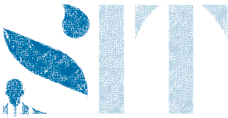Jan Tegze interview
Author of the book Full Stack Recruiter
–

A brief intro
Jan, tell us a bit of yourself:
I am a talent acquisition leader with experience in full lifecycle recruiting and a broad knowledge of international recruiting and sourcing. I am also a blogger, speaker, trainer, author of the book Full Stack Recruiter: The Ultimate Edition, and creator of Sourcing.Games, as well as many other projects. I am a recruiter who loves sourcing and building various sourcing/recruitment tools.
What can people learn from your new book Full Stack Recruiter: The Ultimate Edition?
I tried to prepare a practical manual for all recruiters and sourcers out there, regardless of their experience. I know that many recruiters are not getting proper training when they start at a company or recruitment agency, so my goal is to provide a manual that will help them improve their knowledge in recruitment, sourcing, marketing, and more in a short period of time. Even experienced recruiters and sourcers will find some new tricks and methods that will help them be more effective.
About Jan
🍛 What’s your favorite food?
I like Asian cuisine, and one of my favorite dishes is Bún bò Nam Bô, but I also like poke bowls a lot. Poke bowls are a Hawaiian dish.
✈️ What’s your favorite holiday or travel recommendation?
I have been blessed with the chance to visit many amazing places, so it’s hard to recommend only a few places. But I would love to visit Rome, New York, Auckland, and Barcelona again.
📝 What are your favorite hobbies?
I know it will sound quite boring, but I like to write, so writing would be my favorite hobby. Learning new skills is my second favorite. I also like various quizzes, so I would say that my third-favorite hobby is lockpicking. It’s quite fun, and you need to be really patient. Plus, it is a good skill to have if there is an apocalypse one day!
📱 What are your favorite apps for mobile?
I only use a few apps, and my favorites are Twitter, Medium, Facebook Messenger, and Discord.
Q&A
1. What’s the most important tip that you recommend for someone who is going to begin in a tech recruitment job?
Learn about the technologies and roles you are trying to fill as much as possible. I know it sounds like an obvious thing, but I have met so many recruiters who have only scratched the surface and learned the basics. If you want to communicate with your candidates effectively, learn about what they do. You don’t have to be a developer to hire developers, but at minimum, you do have to know the difference between Java and JavaScript. And little bit more about those technologies. When I was searching for people with AWS experience, I attended a basic AWS course. Not only do I now know how it works and can be a better partner for candidates, but I also learned a new skill and have a better understanding of that technology.
2. Based on your experience, what’s the best way to make the first contact with a developer?
Read their profile very carefully and do your research. Everyone is looking for the “best way,” but every person is unique and has different motivations and aspirations. If you do your research about the person, you can create s better message than others who are continuing to send template messages—“Hello, John. I am a recruiter at ACME company …”—and offering JavaScript positions to Java developers.
There is no “best way” to make the first contact, but you will have a way better chance of getting a response if you really read the person’s profile and create a personal message. Just act like a human when you are interacting with other humans.
3. Which sourcing strategies have you found to be most effective in IT recruitment?
The best strategy in recruitment (it doesn’t matter if it’s IT or any other field) is to be a true partner to your hiring managers and your candidates. If you are a real partner to your hiring managers, you can support them during their search and help them understand what the market looks like, etc. That will lead to less time needed to fill the positions because you will be spending less time on sourcing, and you will be able to identify the best candidates sooner. You won’t be a recruiter who is forwarding just any resume or candidate profile to your hiring manager.
The same approach applies to your relationship with candidates. You need to know at least something about those open roles you are trying to fill and treat every candidate with respect. They may say no to your offer now, but they could contact you in the near future because they know that you are not a spammer recruiter like others.
4. Data is key to discovering where we can improve, but gathering all of the data points needed is very time consuming, so many TA professionals don’t measure metrics. What would you suggest to make gathering data better and easier?
If you are using an ATS (applicant tracking system) in your company, then you already have most of the data you need, you are collecting most of those basic TA metrics. The issue is that most TA professionals can’t read it properly or that the ATS is not providing enough data in graphs and visualizations, so the visualization won’t meet your needs. But if you take the raw data from the ATS and add it into applications like Tableau, you will get a better overview of your entire hiring process.

Few seconds break…☕️ Hope you find it interesting so far 🙂
5. What metrics do you consider most useful for talent acquisition?
What I consider the most useful for talent acquisition could be a less-useful metric for others. Many metrics have different levels of importance based on the team, company, and overall strategy of that company. Time-to-fill is nice to track, but the most useful metric for me is the source of hire, applicants per hire, cost per hire, quality of hire, and candidate and hiring manager satisfaction. Also, why people are applying and joining the company is good to know.
6. What automation tools do you use for recruitment?
Here are my two cents about automation tools: they are only as good and effective as the person who operates them.
I have heard so many predictions that everything will be automated within a year or two, but I started hearing that in 2015. I know that it sounds cool to be able to collect and process lots of data in a fraction of the time, but I have seen so many people spending crazy amount of time setting up programs to do one simple scraping assignment that it’s scary.
I don’t think the whole recruitment process will be automated soon because there are lots of variables in place, and from what I have seen many companies, are missing out on incredibly talented people who didn’t add the right keywords to their resumes, so those tools missed their profiles.
Still, there are many ways to benefit from automation tools. One of the tools that I built for myself is connected to the website I am using for first interactions with new connections on LinkedIn. This tool helped me reduce the number of questions I was getting by 82%, but people still get their answers on the website they’re sent. Or you can use those tools to automate your TA reporting.
7. Your top three most important skills that a tech recruiter should have nowadays.
Those three skills are curiosity, persistence, and tech-savviness. Curiosity is especially important during the COVID era. You always need to find new ways to attract and reach new people. Curiosity will help you find those ways and methods. Being persistent means that you keep trying again and again. Together with curiosity, this skill will help you to move forward. Tech-savviness is also important because the sourcing and recruitment world is full of tools that we use every day. You need to be a little bit tech-savvy to master those tools and get the most from them.
8. Your top three sourcing tools or Chrome plugins for recruiters.
I use LinkedIn and AmazingHiring for technical sourcing, as well as a few other tools. I don’t use many sourcing plugins because I have security concerns about them. If you are an employee, you also need to follow the company’s security policy about tools that you are using on your work computer.
My top three plugins that I use daily are uBlock Origin, Grammarly, and StoryXpress. I use uBlock Origin to remove unwanted ads because I want to focus on the text or content and not on all those ads around it. Grammarly is my second choice because nothing kills a first impression like a message full of typos. The third extension is StoryXpress because sometimes, it’s faster to record video than writing a message. Videos are a great way to explain a new sourcing method to colleagues. But again, with all those tools, you need to consider the company’s security policy, so don’t record any videos with passwords, etc.
9. What has been your motivation during these eight years working for the same company?
If you asked me this question at any time over the past eight years, my answer would always be the same. The people! Being surrounded by people who inspire you to be better at your work and a better human beginning and challenge you to learn new skills and obtain new knowledge is really rewarding. If you have these people around you at work, then that is the best motivation you can get.
10. What do you think about SIT? Give us your feedback!
I always believed that any learning is a good thing because it helps you move forward and open new horizons. In recruitment—and especially in sourcing—learning new things is one of the most important things you can do. There is lots of scary news out there saying that we will be replaced by robots soon, but if you turn yourself into a lifelong learner, you don’t need to be afraid of being replaced.
Thank you Jan for your interest in conducting this interview and for showing us a little more about yourself. We wish you from SIT lots of success in all your projects! 🚀
We invite everyone to discover more about Jan through the following contact links below, but… before you jump on LinkedIn to look for developers or contact Jan regarding his new book, I dare you to do a sourcing challenge by clicking on the image START THE GAME and trying to get as far as possible. If you complete the challenge 🏁, please let us know 😎
◻️ LinkedIn Profile: https://www.linkedin.com/in/jantegze/
◻️ Full Stack Recruiter: https://www.fullstackrecruiter.net/
◻️ Blog: http://tegze.eu/
◻️ Personal website: https://jantegze.com/
◼️ Sourcing.Games: http://sourcing.games/

[Sourcing challenge 💻] SIT’s hint for first level: <div> Think like a developer </div>








